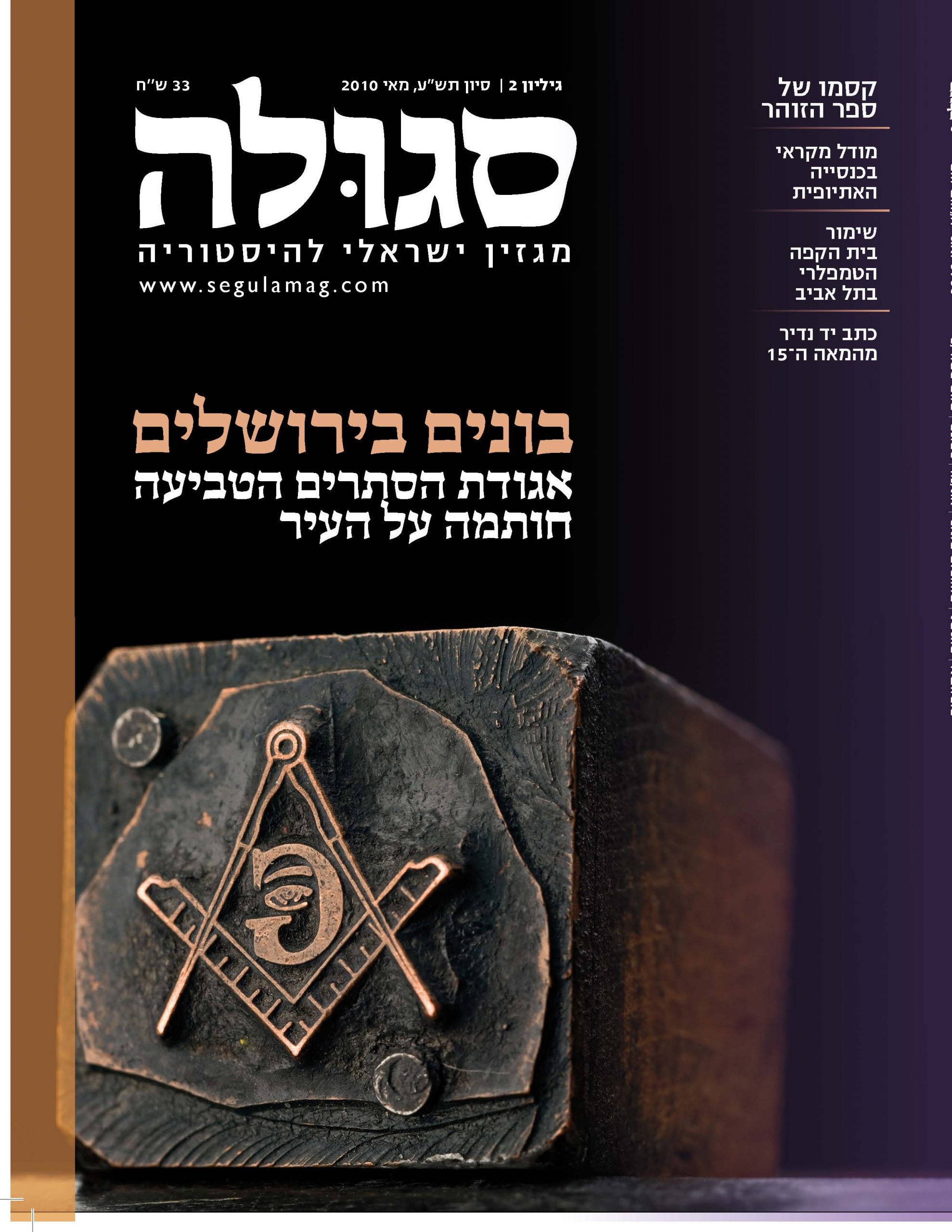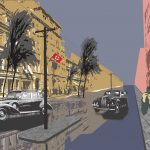גילויו של ספר הזוהר חולל טלטלה בעולם היהודי ומחוצה לו. השפעתו על התרבות היהודית הייתה ועודנה דרמטית. נראה שסוד קסמו נעוץ בתורתו החדשנית ובתפיסת החירות המאתגרת והמתריסה שהוא מציע- החירות לפרש מחדש, לדמיין, ליזום ולהיפתח לממדים מגוונים. גם יסודות המיניות וההומור בעולמות הארציים והעליונים כאחד תרמו לקסם
שנות השמונים של המאה ה-13, העולם היהודי כמרקחה. בחוגי הרבנים והמקובלים רוחשות שמועות על ספר סוד חדש שנתגלה. השמועות מדברות על כך שהספר נכתב בידי רבי שמעון בר יוחאי, התנא המיתולוגי שחי ופעל בארץ ישראל במאה השנייה לספירה. לפי השמועות גליונות הספר הוסתרו בכדי חרס עתיקים ונמסרו בחשאיות מרב לתלמיד במהלך הדורות, עד שנחשפו בידי אחד מגדולי המקובלים של התקופה – הרב משה די ליאון. השנה המדויקת היא 1286.
מסע בעקבות המקור
תלמידי החכמים ומורי ההוראה של הדור חלוקים בדעתם באשר למקוריותו של הספר, זה אומר בכה וזה אומר בכה. כמה שנים לאחר מכן מחליט אחד מהם לצאת למסע אישי כדי להתחקות אחר מוצאו של הזוהר. שמו הוא רבי יצחק דמן עכו.
רבי יצחק דמן עכו (1340-1250), מגדולי חכמי דורו, היה תלמידו של הרמב"ן ושל רבי שמואל צרפתי. כשנכבשה עכו בידי אלאשרף מלך מצרים בשנת ה'נ"א (1291), רוב תושביה היהודים והנוצרים נרצחו או נשבו. בין השבויים היה גם רבי יצחק. לא ברור באיזו מדינה השתחרר ונפדה משביו, אך קיימות עדויות על הימצאו בשנת ה'ס"א (1301) באיטליה. באותה שנה הוא נוסע לספרד כדי לחקור את מקורו של הזוהר.
הדיווח המלא על חקירתו של רבי יצחק דמן עכו נמצא בחיבורו 'דברי הימים', אולם הספר שהיה בכתב יד לא שרד ולא הודפס מעולם. קטע ממנו הופיע ב-1510 בקונסטנטינופול במהדורה הראשונה של 'ספר היוחסין' לרבי אברהם זכות (1515-1448). קטע זה הושמט מכל המהדורות הבאות של הספר. וכך מעיד רבי יצחק דמן עכו:
מפני שראיתי כי דבריו [=של ספר הזוהר] מופלאים, ישאבו ממקור העליון המעיין המשפיע … רדפתי אחר רבי משה די ליאון … ואשאלה את התלמידים הנמצאים בידם דברים גדולים ממנו: מאין בא להם סודות מופלאים מקובלים מפה אל פה אשר לא ניתנו ליכתב ונמצאו שם מבוארים לכל קורא ספר? … ולא מצאתי תשובותיהם על שאלתי זאת מכוונות, זה אומר בכה וזה אומר בכה.

רבי יצחק דמן עכו מביא בעדותו את הגרסאות העיקריות למקורו של הספר. האחת, הספר עבר מדור לדור והגיע לידיו של רבי משה בן נחמן (הרמב"ן, 1270-1194), מהדמויות הרבניות הבכירות והמהימנות ביותר בדורו. הרמב"ן שלח את הספר מארץ ישראל לבנו בקטלוניה, אך הוא לא הגיע ליעדו ונפל לידיו של רבי משה די ליאון. השנייה, רבי משה די ליאון כתב את הספר 'בשם הכותב'. 'שם הכותב' הוא ביטוי לסוג של תקשור – כתיבה הנערכת במצב טרנס אקסטטי שבו הכותב מזדהה עם דמות קדומה ומשמש כמדיום לתכנים שמגיעים ממנה.
המתנגדים לספר טענו שלא היה שום תקשור ושום מקור שמימי אחר, ורבי משה די ליאון כתב את הספר מלבו מתוך אינטרס כלכלי: "ולמען יקח בהם מחיר גדול כסף וזהב רב, תולה דבריו באשלי רברבי, ואמר מתוך הספר אשר חיבר רשב"י ורבי אלעזר בנו וחבריו אני מעתיק להם דברים אלו". כתיבה זו מכונה במחקר פסידו אפיגרפיה, או בתרגום חופשי – כתיבה שקרית.
רבי יצחק דמן עכו מגיע לעיר ויאדוליד שבספרד ומצליח לפגוש שם את רבי משה די ליאון, שנשבע בפניו:
כה יעשה לי א'-והים וכה יוסיף אם לא הספר הקדמון אשר חיבר רשב"י אשר הוא היום בביתי במדינת אשביליא היא אוילה, בבואך אליי שם אראך". הם נפרדים, ולרוע המזל נפטר רבי משה די ליאון לפני שרבי יצחק דמן עכו הספיק להגיע לביתו ולהתרשם מן הכתבים המקוריים.
רבי יצחק דמן עכו מגיע לאשבילא, עירו של רבי משה די ליאון, ופוגש שם "זקן חכם גדול" בשם רבי דוד דין קורפו, שטוען שאשתו של רבי משה די ליאון העידה בפניו שבעלה כתב את הספר בעצמו, וכה דבריה:
כה יעשה לי א'-והים וכה יוסיף אם מעולם ספר זה היה עם אישי, אבל מראשו ולבו מדעתו ושכלו כתב כל מה שכתב. ואומרה לו בראותי אותו כותב מבלעדי דבר לפניו: מדוע תאמר שאתה מעתיק מספר ואתה אין לך ספר רק מראשך אתה כותב, הלוא נאה לך לאמר כי משכלך אתה כותב ויותר כבוד יהיה לך. ויען אליי ויאמר: אילו אודיע להם סודי זה שמשכלי אני כותב לא ישגיחו בדבריי ולא ייתנו בעבורם פרוטה, כי יאמרו כי מלבו הוא בודה אותם, אבל עתה כאשר ישמעו שמתוך ספר הזוהר אשר חיבר רשב"י ברוח הקודש אני מעתיקם, יקנו אותם בדמים יקרים כאשר עינייך רואות.
בהמשך פוגש רבי יצחק דמן עכו את רבי יוסף הלוי בנו של רבי טודרוס המקובל. הלה קבע בנחרצות: "דע והאמן כי ספר הזוהר אשר חיבר רשב"י היה בידו של רבי משה זה, וממנו יעתיק וייתן לאשר טוב בעיניו". רבי יוסף טען שהוא בחן את רבי משה די ליאון וביקש ממנו לכתוב לו עותק במקום חלק מכתב היד שאבד לו. הסתבר שהעותק החדש זהה למקורי ורבי יוסף ראה בזה הוכחה שלרבי משה די ליאון היה כתב יד מקורי שממנו הוא עשה את ההעתקים. הוא מצא תלמידים נוספים שטענו שבידיו של רבי משה די ליאון היה מקור אותנטי, ואשתו שיקרה בעדותה מפני שחששה שיבקרוה על שמכרה בעד פרוטות את הספר המקורי לשימוש חוזר בקלף. בנקודה זו נקטעת עדותו של רבי יצחק דמן עכו.
קטע זה הוא היחיד שנשמר מספר 'דברי הימים' המקורי, ומכיוון שנקטע באמצעו אין לנו אפשרות לדעת מה היו מסקנותיו של רבי יצחק דמן עכו, האם הוא קיבל את עדותו של רבי משה די ליאון כמהימנה או לא.
כך או כך, ולמרות שהמחלוקות לא נפסקו לאורך דורות, הספר הלך והתקבע כספר הקנוני החשוב ביותר של עולם הסוד היהודי. השפעתו המשמעותית ביותר הייתה על מגורשי ספרד, ובעקבותיהם על חוג מקובלי צפת של המאה ה-16. לאחר שרבי יצחק לוריא אשכנזי, האר"י, בנה את עיקרי שיטתו הקבלית כפירוש לטקסטים מרכזיים מתוך הזוהר – ה'אִדרות' וה'סיפרא דצניעותא' – התקבע מעמדו בצורה סופית כ'תנ"ך של הקבלה'.
אין לך מנוי לסגולה?
זו ההזמנות להצטרף למנוי בעברית או באנגלית ולקבל גישה לכל הכתבות באתר, את הגליון המודפס הביתה בדואר ועוד שלל הטבות מפתיעות
כבר מנויים? התחברו







